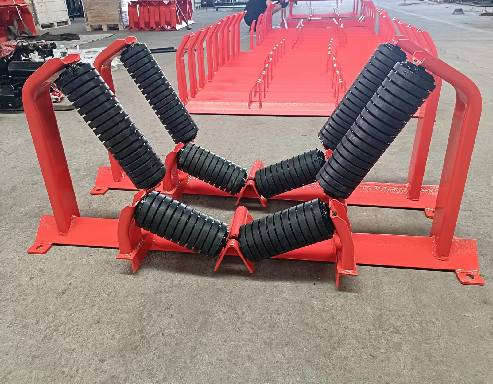 Afrikaans
Afrikaans  Albanian
Albanian  Amharic
Amharic  Arabic
Arabic  Armenian
Armenian  Azerbaijani
Azerbaijani  Basque
Basque  Belarusian
Belarusian  Bengali
Bengali  Bosnian
Bosnian  Bulgarian
Bulgarian  Catalan
Catalan  Cebuano
Cebuano  Corsican
Corsican  Croatian
Croatian  Czech
Czech  Danish
Danish  Dutch
Dutch  English
English  Esperanto
Esperanto  Estonian
Estonian  Finnish
Finnish  French
French  Frisian
Frisian  Galician
Galician  Georgian
Georgian  German
German  Greek
Greek  Gujarati
Gujarati  Haitian Creole
Haitian Creole  hausa
hausa  hawaiian
hawaiian  Hebrew
Hebrew  Hindi
Hindi  Miao
Miao  Hungarian
Hungarian  Icelandic
Icelandic  igbo
igbo  Indonesian
Indonesian  irish
irish  Italian
Italian  Japanese
Japanese  Javanese
Javanese  Kannada
Kannada  kazakh
kazakh  Khmer
Khmer  Rwandese
Rwandese  Korean
Korean  Kurdish
Kurdish  Kyrgyz
Kyrgyz  Lao
Lao  Latin
Latin  Latvian
Latvian  Lithuanian
Lithuanian  Luxembourgish
Luxembourgish  Macedonian
Macedonian  Malgashi
Malgashi  Malay
Malay  Malayalam
Malayalam  Maltese
Maltese  Maori
Maori  Marathi
Marathi  Mongolian
Mongolian  Myanmar
Myanmar  Nepali
Nepali  Norwegian
Norwegian  Norwegian
Norwegian  Occitan
Occitan  Pashto
Pashto  Persian
Persian  Polish
Polish  Portuguese
Portuguese  Punjabi
Punjabi  Romanian
Romanian  Russian
Russian  Samoan
Samoan  Scottish Gaelic
Scottish Gaelic  Serbian
Serbian  Sesotho
Sesotho  Shona
Shona  Sindhi
Sindhi  Sinhala
Sinhala  Slovak
Slovak  Slovenian
Slovenian  Somali
Somali  Spanish
Spanish  Sundanese
Sundanese  Swahili
Swahili  Swedish
Swedish  Tagalog
Tagalog  Tajik
Tajik  Tamil
Tamil  Tatar
Tatar  Telugu
Telugu  Thai
Thai  Turkish
Turkish  Turkmen
Turkmen  Ukrainian
Ukrainian  Urdu
Urdu  Uighur
Uighur  Uzbek
Uzbek  Vietnamese
Vietnamese  Welsh
Welsh  Bantu
Bantu  Yiddish
Yiddish  Yoruba
Yoruba  Zulu
Zulu conveyor impact bar
Understanding Conveyor Impact Bars Their Importance and Applications
Conveyor systems are crucial components in various industries, facilitating the efficient movement of materials and products. One of the essential elements in these systems is the conveyor impact bar. This article explores the significance, functionality, and benefits of conveyor impact bars in material handling processes.
What are Conveyor Impact Bars?
Conveyor impact bars are specifically designed components used in conveyor systems to absorb the energy generated during the loading process of materials. Typically constructed from durable materials such as rubber, polyurethane, or high-density polyethylene, impact bars are located at the point where materials are discharged onto the conveyor belt. Their primary role is to protect the belt from damage caused by heavy loads, ensuring a longer lifespan for the belt and reducing maintenance costs.
Importance of Conveyor Impact Bars
The importance of conveyor impact bars cannot be overstated. When materials are dropped onto a conveyor belt from heights, they generate significant impact forces. These forces can lead to various issues, including belt deformation, surface damage, and premature wearing. This is where impact bars come into play—they mitigate these impacts, allowing the conveyor system to operate smoothly and efficiently.
1. Protection of Conveyor Belts One of the most significant advantages of using impact bars is the protection they provide to conveyor belts. With the help of impact bars, the risk of belt injuries like rips or tears is significantly reduced. By absorbing shock and dispersing the load, these bars extend the operational life of the conveyor system.
conveyor impact bar

2. Cost Efficiency By protecting the conveyor belt from damage, impact bars contribute to lower maintenance costs. They minimize the frequency of repairs and replacements, which can be a major line item in operational budgets. Investing in quality impact bars can result in substantial savings over time.
3. Enhanced Safety The use of impact bars contributes to safer working conditions. By preventing damage to the conveyor system, the likelihood of malfunctions decreases, reducing the risk of accidents. A well-maintained conveyor system operates more reliably, which is beneficial for both employees and equipment.
4. Improved Efficiency Conveyor impact bars help maintain a consistent flow of materials through the system. By reducing downtime associated with repairs, the overall efficiency of material handling operations is enhanced. This is particularly crucial in environments where time is money, such as manufacturing and distribution centers.
Applications of Conveyor Impact Bars
Conveyor impact bars find applications across multiple industries. In mining, they protect conveyor systems that transport heavy ores and minerals. In manufacturing and assembly lines, they facilitate the movement of large components without causing damage. Additionally, in warehouse operations, impact bars help manage the flow of packaged goods, ensuring safe and efficient deliveries.
Conclusion
In conclusion, conveyor impact bars play a vital role in the functionality and efficiency of material handling systems. By protecting conveyor belts from impacts, they not only enhance safety but also contribute significantly to cost savings and operational efficiency. As industries continue to evolve and demand greater efficiency, the incorporation of high-quality conveyor impact bars into systems will remain a best practice for achieving optimal performance and longevity. Understanding and investing in these components can lead to substantial benefits, making them an essential consideration for any material handling operation.
-
Revolutionizing Conveyor Reliability with Advanced Rubber Lagging PulleysNewsJul.22,2025
-
Powering Precision and Durability with Expert Manufacturers of Conveyor ComponentsNewsJul.22,2025
-
Optimizing Conveyor Systems with Advanced Conveyor AccessoriesNewsJul.22,2025
-
Maximize Conveyor Efficiency with Quality Conveyor Idler PulleysNewsJul.22,2025
-
Future-Proof Your Conveyor System with High-Performance Polyurethane RollerNewsJul.22,2025
-
Driving Efficiency Forward with Quality Idlers and RollersNewsJul.22,2025





























